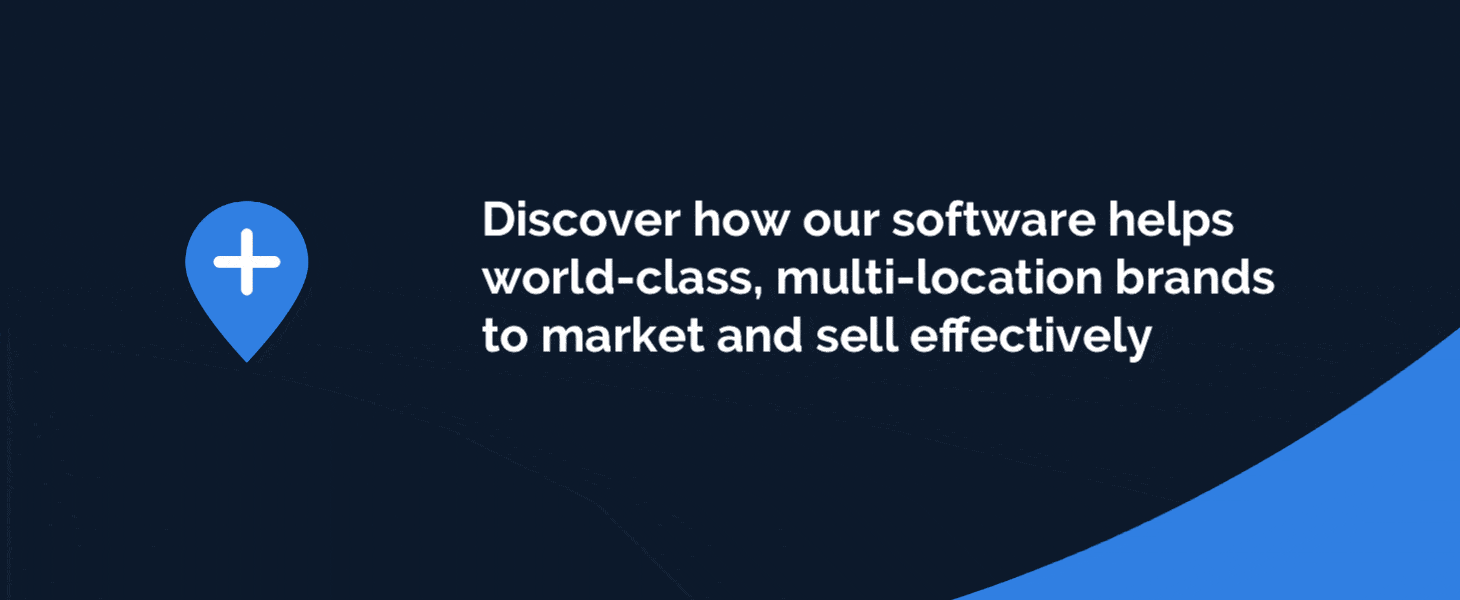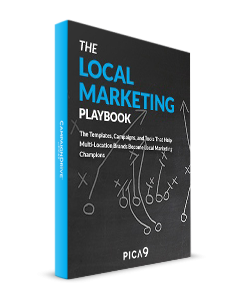Local marketing chaos is a condition where field-based marketers are either executing in a less than fully disciplined way or they've come to rely excessively on your resources, your people at headquarters, and your in-house creative operations team. Here are a few reasons why so many brands face this challenge and practical tips on how you can move from it into a world where you're operating more efficiently at HQ and your local marketers are operating more effectively, at the same time.
The Root of Local Marketing Chaos
Let's first begin by understanding why local marketing chaos arises in the first place.
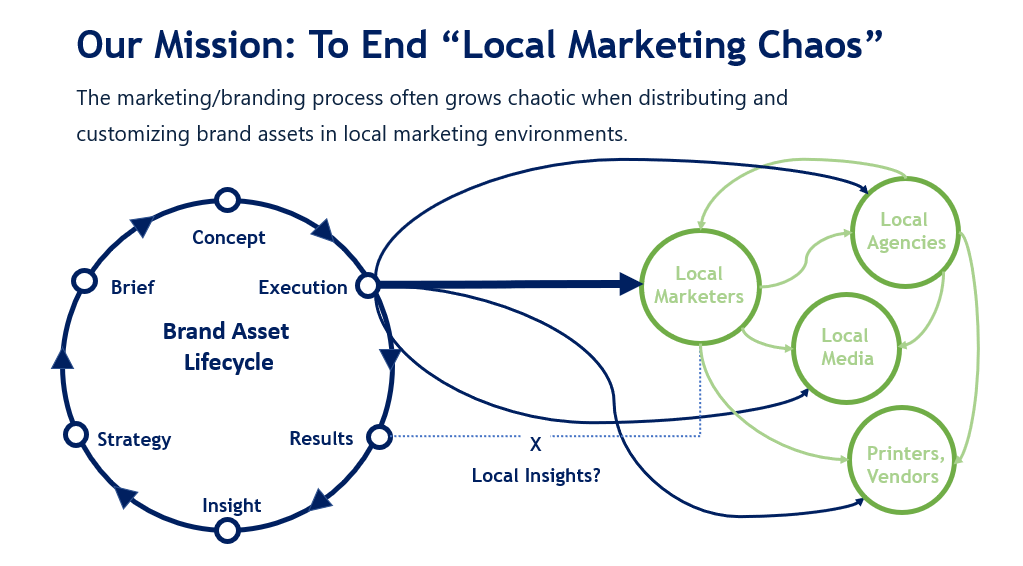
In this image, you can see two very different worlds. On the left-hand side, we have the world of the brand agency and the creative teams. It is consistent and efficient. Moving from concept through execution through the results, through insights that lead to strategy and brief, and more concepts. And that creative cycle has been practiced over time. It's your profession.
But on the other side of the screen is the local world, a world in which folks are operating often without much of a plan, working with vendors of many different kinds from local agencies to local media, to printers and vendors, and all of this often happening without any clear feedback mechanism to show the team back at brand headquarters. If the work they're providing and the assets they're providing to the locals aren't having the right effect and being used in the right way— this is the environment in which local marketing chaos can arise.
A Vicious Cycle
Now here's the real problem with local marketing chaos.
It's cyclical in nature. So if you have this condition arise in your local markets, where users are depending excessively, either on their local vendors or excessively on you, it can spark a vicious cycle.
Here's how it works. Start at the top of this diagram as an in-house agency, generally speaking, you don't quite have enough budget to get everything that you want to get done.
And you particularly don't have enough manpower or resources to really execute in each individual local market in a coordinated and cost-effective way. There's just not enough of you to go around. So moving to the right, as a result of that, you find yourself getting swamped with one-off requests, different markets asking you for your assistance all at the same time, and almost always on a last-minute basis.
Related: How to Handle One-Off Design Requests
When those local marketers can't get the assistance that they need, what happens? Well, they start going rogue. And as they go rouge, that leads to your brand consistency suffering and the use of your assets actually declining because they begin to depend more and more on local vendors who are doing things in their own unique and often not very brand compliant ways.
Now, when that happens, you find yourself not only with an uncoordinated execution of your brand, but you find yourself without sufficient information about what's going on in the fields in the first place. And because you can't see what's going on, you cannot justify what has gone on. And that means you can't justify your agency budget. So, you end up with fewer resources the next year than you need, and the cycle continues.
So the question is, how do we break out of this vicious cycle of local marketing chaos? How do we create enough order and discipline at the local level so that we create enough oxygen at the brand headquarters level for real strategic work to be done?
Breaking The Cycle
This is what I call an example of what most brand operations and creative operations teams start to do when they feel chaos closing in. First, they'll begin by creating some shared resources. Look at the yellow section in this diagram, they'll have shared resources for assets like Dropbox.
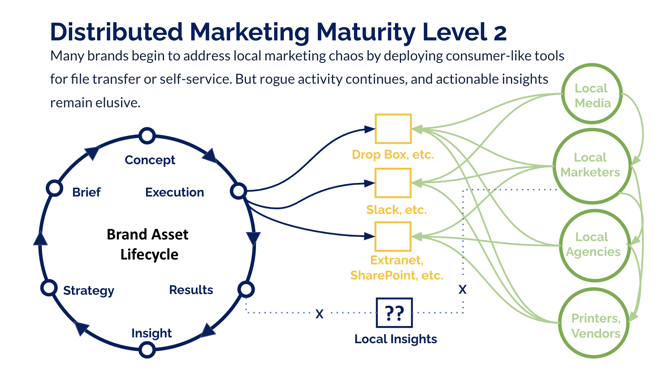 They might use a simple workflow tool like slack or monday.com or an extranet, like SharePoint, all in the effort to take the brand-consistent assets, deploy them to the local marketers, and begin to let those local marketers self-serve for themselves. This is what I call maturity level two. It's not all the way there, but it's better than what was, but if you look at this a little bit more closely, you'll see that there are still plenty of intersecting and overlapping lines at the local level.
They might use a simple workflow tool like slack or monday.com or an extranet, like SharePoint, all in the effort to take the brand-consistent assets, deploy them to the local marketers, and begin to let those local marketers self-serve for themselves. This is what I call maturity level two. It's not all the way there, but it's better than what was, but if you look at this a little bit more closely, you'll see that there are still plenty of intersecting and overlapping lines at the local level.
Still lots of duplicated assets, lots of time spent searching for and not finding what you need, and even more important, look at the bottom of this diagram where we see local insights. This is having a real sense of what's going on in the local markets, what they're doing, and why they're doing it. That's still a question mark.
So if you manage to get here, you may find that you address some portions of the local marketing chaos problem, but you're still sailing into some pretty heavy headwinds. What you need to really solve the problem is a very particular set of skills and the image below demonstrates what those skills need to be.
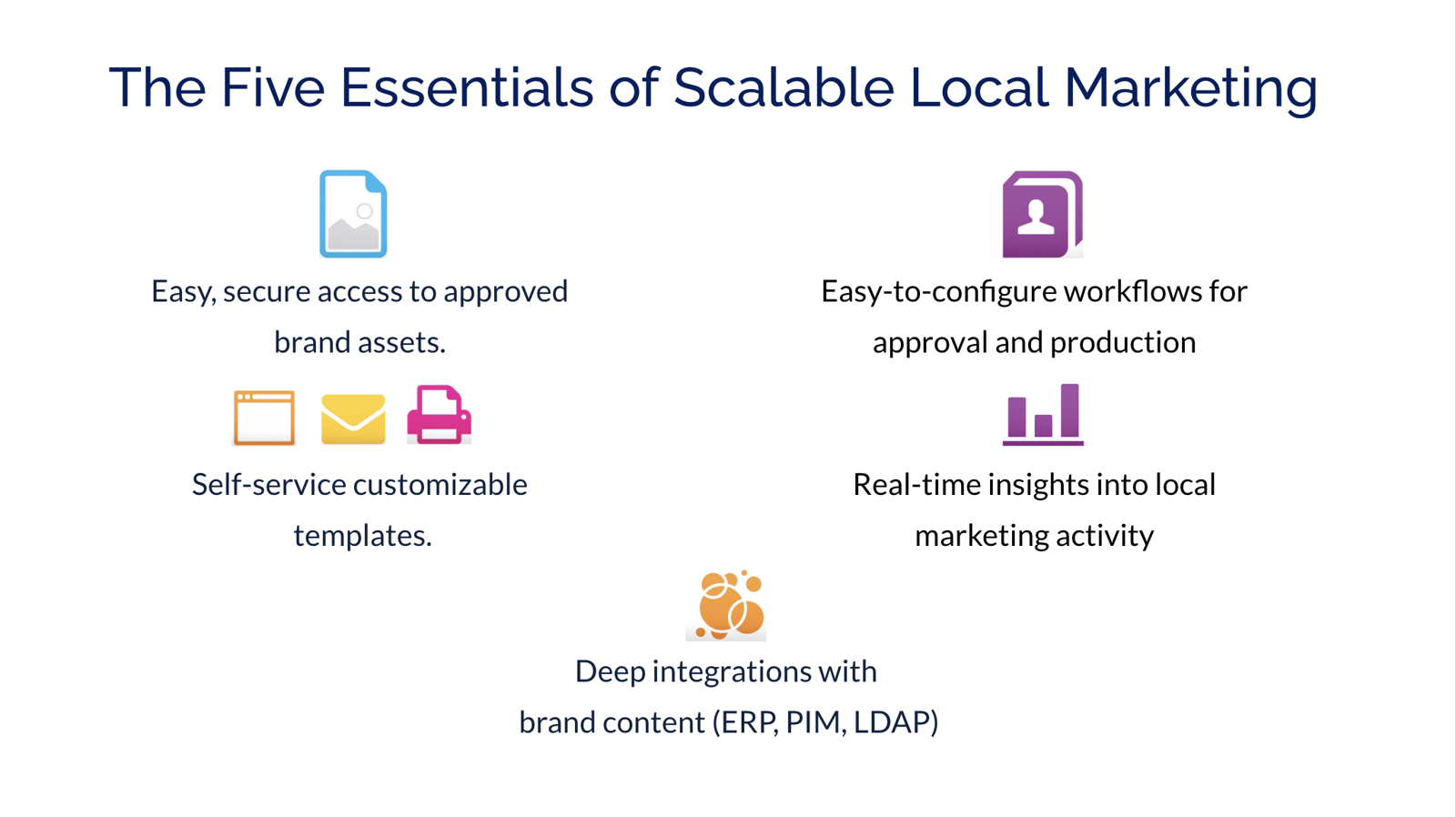
The 5 Essentials of Scalable Local Marketing
1. Easy, Secure Access to Approved Brand Assets
First, you have to be very good at providing easy access to the assets that local marketers need without cluttering them. With assets that they shouldn't use, shouldn't see, and just get in their way in the first place. So you need easy, secure access to brand assets that Dropbox that we saw on the previous screen, that's a great place to begin.
It may not always be the place where you want to end.
2. Self-Service Customizable Templates
Second, you're going to need templates, templates that create guardrails for your users so they know what to do and what they shouldn't do. And even better makes it difficult or impossible for them to do what they shouldn't do.
3. Deep Integrations With Brand Content (ERP, PIM, LDAP)
The third thing is you're gonna need lots and lots of content.
If there's one thing we've learned about local marketers, it's that they depend on the brand to give them designs and to give them a copy. They are not copywriters and they are not the designers they sometimes think they are. So you need, in order to solve the problem of local marketing chaos, it's important to be able to provide fast access to headlines, creative concepts, and body copy in much the same way you do with digital assets.
And in fact, it's best if you can provide the images and the copy together as creative concepts, that makes life simple for your local marketers, that allows them to self-serve while still remaining on brand.
4. Easy to Configure Workflows for Approval and Production
When I say workflow for your local marketers, I do not mean anything complicated. Most of the time, your local marketers have about as much time to spend thinking about marketing as they have to decide what they're gonna order at Starbucks this morning.
So your workflows need to be super simple. One-step approvals, easy access to the template they're looking for, and the ability to produce it without any approval whatsoever. If that's at all possible streamline and simplify, here's what that means.
Lock things down a little bit more tightly than you might at first think is necessary.
Take away the approval loops and here's what you'll do. You'll accelerate delivery and you'll encourage your users to stay on brand.
5. Real-Time Insights to Local Marketing Activity
And then finally, what's the fifth thing you need? You've got to have access to reporting data that tells you what your local marketers are doing and when, and with what assets, with what templates, with what content that's going to help you decide in the next cycle, where you're gonna focus your creative attentions, where you are going to invest the most valuable thing you have, your in-house agency and your creative resource time. Your reporting data will help you to decide what to double down on and what to get out of the way and exercise from the local marketing conversation.
Solving the Local Marketing Chaos Problem With CampaignDrive by Pica9
Now you can get all of those five essentials in many different places. You can create all of those things yourself, probably using tools that are close to hand right now. But, there are systems that put all of these capabilities in one place. And if you're trying to solve the problem of local marketing chaos, you may want to look at a marketing toolkit, like CampaignDrive, that provides all of these things.
Along the way, local marketing chaos is something we all feel, but it is not something that we all have to live with forever. If you can organize your user community to expect good brand assets delivered on a timely basis and in a regular way and if you can get those users to come to a common place to access those assets under your watchful eye, you will be able to gain momentum over the problem of local marketing chaos.
As for the results? What you'll find is that as time goes by, it increases confidence throughout the whole supply chain. In this creative supply chain, your creatives at headquarters will feel like the assets that they work so hard to create are being used, your local marketers will feel more effective and confident when they're trying to create brand executions on a self-service basis, and your leader will feel more confident that the budget they're yielding each year is being used appropriately. And that means next year, you'll probably have a little bit more budget to boot.

